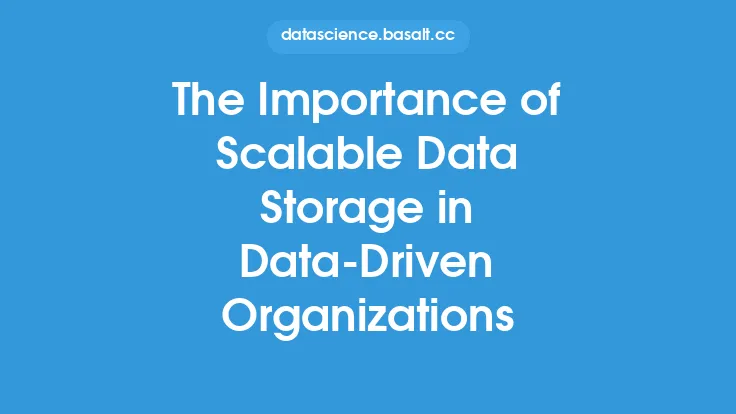In today's digital landscape, data is the lifeblood of any organization, and its protection is of paramount importance. The sheer volume of data being generated, stored, and transmitted has created a complex ecosystem that is vulnerable to various threats, including hardware failures, software corruption, human error, and malicious attacks. As such, having a robust data backup and recovery strategy in place is crucial to ensure business continuity, minimize data loss, and maintain customer trust. This article will delve into the importance of data backup and recovery in security, exploring the benefits, best practices, and technical aspects of this critical aspect of data governance.
Introduction to Data Backup and Recovery
Data backup and recovery refer to the processes of creating copies of data and restoring them in case of data loss or corruption. This can be due to various reasons such as hardware or software failures, natural disasters, or cyber-attacks. A well-planned data backup and recovery strategy ensures that data is protected, and business operations can be quickly restored in the event of a disaster. This is particularly important for organizations that rely heavily on data to operate, such as financial institutions, healthcare providers, and e-commerce businesses.
Benefits of Data Backup and Recovery
The benefits of data backup and recovery are numerous and far-reaching. Firstly, it ensures business continuity by minimizing downtime and data loss. This, in turn, helps to maintain customer trust and loyalty, as well as protect the organization's reputation. Secondly, data backup and recovery help to reduce the financial impact of data loss, which can be significant. According to a study, the average cost of data loss for a small business is around $10,000 per day. Finally, data backup and recovery provide a competitive advantage by enabling organizations to quickly respond to changing market conditions and customer needs.
Types of Data Backup
There are several types of data backup, each with its own advantages and disadvantages. The most common types include:
- Full backup: This involves creating a complete copy of all data.
- Incremental backup: This involves creating a copy of only the data that has changed since the last backup.
- Differential backup: This involves creating a copy of all data that has changed since the last full backup.
- Mirror backup: This involves creating an exact copy of all data.
- Cloud backup: This involves storing data in a cloud-based storage system.
Best Practices for Data Backup and Recovery
To ensure effective data backup and recovery, several best practices should be followed. Firstly, a regular backup schedule should be established, with backups performed at least daily. Secondly, data should be stored in a secure, off-site location, such as a cloud-based storage system or a remote data center. Thirdly, data should be encrypted to protect it from unauthorized access. Finally, backup and recovery processes should be regularly tested to ensure they are working correctly.
Technical Aspects of Data Backup and Recovery
From a technical perspective, data backup and recovery involve several key components, including:
- Backup software: This is used to create and manage backups.
- Storage media: This can include hard drives, tape drives, or cloud-based storage systems.
- Network infrastructure: This is used to transfer data between systems and storage media.
- Encryption: This is used to protect data from unauthorized access.
- Compression: This is used to reduce the size of backup files.
- De-duplication: This is used to eliminate duplicate data and reduce storage requirements.
Challenges and Limitations of Data Backup and Recovery
Despite the importance of data backup and recovery, several challenges and limitations exist. Firstly, the sheer volume of data being generated can make backup and recovery processes time-consuming and resource-intensive. Secondly, the complexity of modern IT systems can make it difficult to ensure that all data is properly backed up and recoverable. Finally, the increasing use of cloud-based services and mobile devices can create new challenges for data backup and recovery.
Future of Data Backup and Recovery
The future of data backup and recovery is likely to be shaped by several trends, including the increasing use of cloud-based services, the growth of big data, and the development of new technologies such as artificial intelligence and blockchain. As such, organizations will need to adapt their data backup and recovery strategies to meet these changing needs and ensure that their data is properly protected and recoverable.
Conclusion
In conclusion, data backup and recovery are critical components of any organization's data security strategy. By understanding the benefits, best practices, and technical aspects of data backup and recovery, organizations can ensure that their data is properly protected and recoverable in the event of a disaster. As the digital landscape continues to evolve, it is essential that organizations stay ahead of the curve and adapt their data backup and recovery strategies to meet the changing needs of their business and customers. By doing so, they can minimize the risk of data loss, maintain business continuity, and protect their reputation and customer trust.





